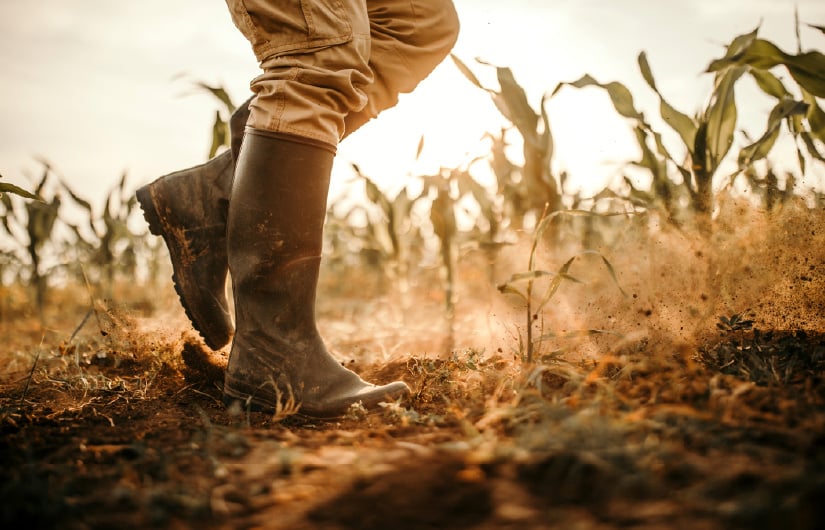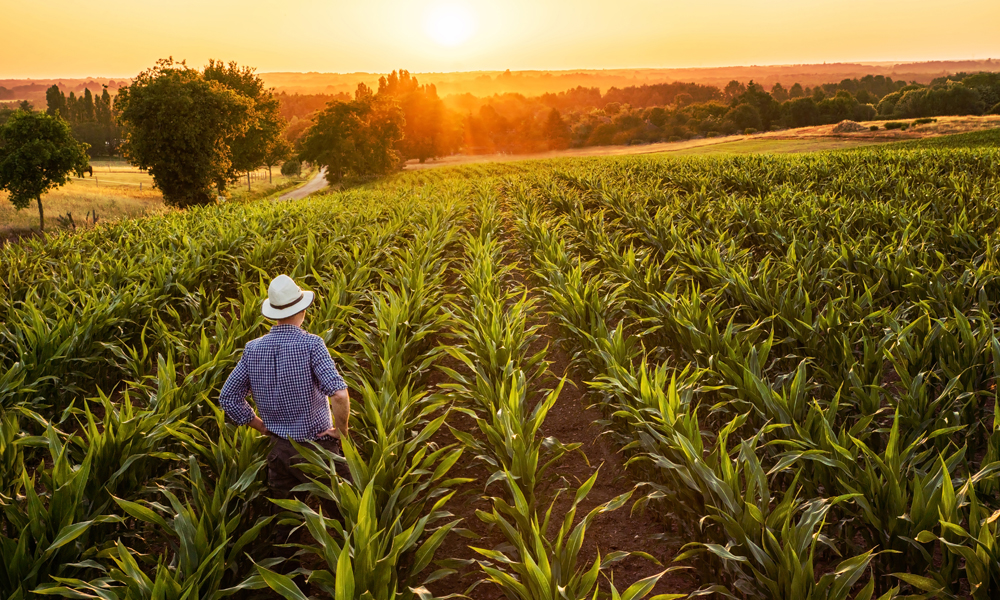To rent or buy farmland? For a grower, the answer depends on circumstances. But just because you can’t buy right now doesn’t mean you shouldn’t plan. To guide your planning, consider the following.
Buying farmland: The pros and cons
The big downside to buying farmland for your operation is cost. And all too frequently, beginning farmers find themselves in a “land poor” situation, because the payments devour a large chunk of capital at first. That can deter anyone from stepping away from renting and adding parcels.
But as a long-term strategy, there are plenty of upsides to adding acreages of farmland.
- You can build equity. Owning farmland makes you a more attractive lending customer, so you have more options to free up working capital. For example, once you establish a credit history, refinancing the original loan for more favorable terms might be an option.
- You can run your operation just the way you envisioned. Unlike renting land, you have complete management rights of the property along with control of your decisions about crop rotation and trying new farm practices.
- Buying land eliminates many surprises that are unique to renting, such as non-renewals, terminations and rate hikes. When you own, there’s no possibility that you’ll find yourself scrambling to find a replacement parcel because the owner has other plans. Just about everyone encounters these swings and twists and that can have a big effect on your operation.
- Unlike renting, you can make improvements on the land. When you make improvements on your land, you’re investing back into your farm — your business — making it more valuable.
- Farmland has lasting value because it will always be productive — with the right care and stewardship. A productive asset is always a sound investment. (Which is why it’s not just the family farmers who are scooping up farmland.)
What is the value of farmland?
In Minnesota, the value of farmland has remained stable between 2014 and 2020, the year with the most recent data.
- Total farm value (includes land and buildings): $4,840 per acre
- Cropland: $4,800 per acre
- Pasture: $1,680 per acre.
Source: USDA, National Agriculture Statistics Service, Land Values 2020 Summary
However, now that we’re halfway into 2021, farmland in Minnesota is seeing “record-high prices,” according to a July 2021 Star Tribune article. And it’s expected to remain so for the next few years, creating a seller’s market for landowners.
But costs per acre can vary widely, so while NASS is a good starting point, you’ll have to dig deeper into county data to understand what buying land would cost you.
You can find out at the University of Minnesota Extension’s Farmland Sale Prices report, which tracks historical agricultural land values in Minnesota by county. Even if you’re not ready to buy, this data can help you evaluate rental prices.
What if you’re renting and want to buy?
If you’re just starting or building your operation, renting often makes financial sense.
Costs to rent versus buying are typically lower, especially in the short term.
For many producers, renting fits into a long-term strategy to build acreage. Because eventually, if the owner (or their heirs) decide to sell, the one who has a history of leasing land from them has their foot in the door. If you’re one of many farmers who are leasing without a contract, that’s where having one can put your plans on solid ground. Better yet, if you can include a clause in the agreement that grants you the first right to purchase, that’s your stepping stone to adding acreage.
Not working with a lease? Get it in writing.
A contract can protect you and your interests — keeping the rug from being pulled from under you.
Contracts establish a track record and history of your venture, showing attorneys, lenders and other interested parties that you are building a serious enterprise.
Before you agree to rent, you might see it as a way to test-drive the land. When you own it, you’re inheriting its problems, whether it’s soil health or drainage. You’ll experience everything firsthand: soil health, location, infrastructure, wet years, dry years, drainage — everything you’ll need to know to make a sound decision.
Getting the owner to agree to a right to first purchase may not be as difficult as you think. Such agreements can provide a sense of security and peace of mind, knowing there’s a transitional plan that takes the burden off their family members down the line. (They’ll be more than glad to avoid the process of vetting and choosing a seller!) Not only that, but they’ll know you have a vested interest in good land management.
There’s less at stake with renting. But don’t make the mistake of failing to research the parcel before you enter a lease agreement. It can make all the difference on your yields.
First, make sure you’re getting a square deal. One of the first things you’ll want to do is benchmark against other farm parcels in your county. The University of Minnesota Extension Service provides a handy spreadsheet that details rent per acre trends by county in Minnesota. If anything’s wildly out of sync with that of their neighbors — too expensive, or too good to be true — question it.
Expertise you can trust
At Minnwest Bank, our agri-business bankers have gained the trust of growers across Minnesota. That’s because they’re also farmers and producers who live and work in their communities. They know firsthand the challenges and what’s at stake.
Get expertise you can trust to help your farm thrive. Make an appointment with a Minnwest ag banker today!


